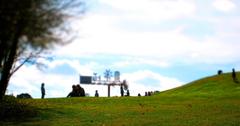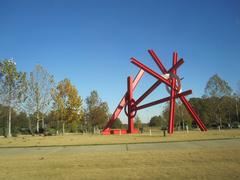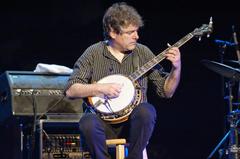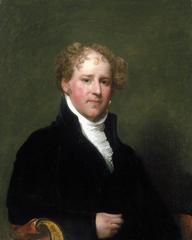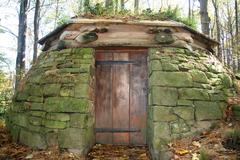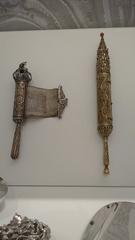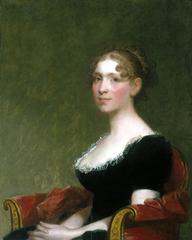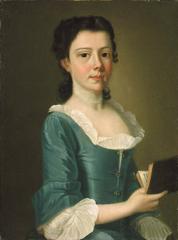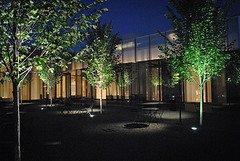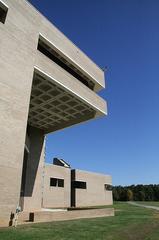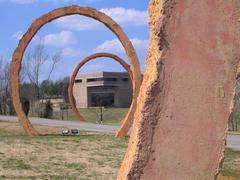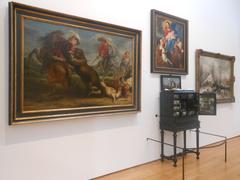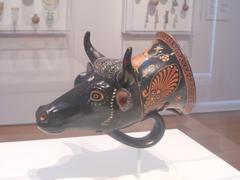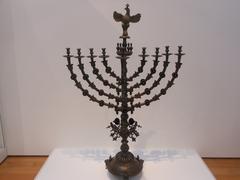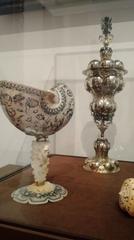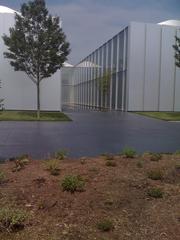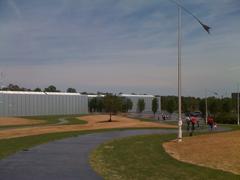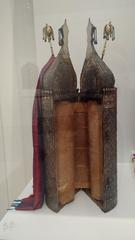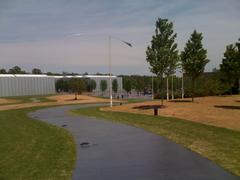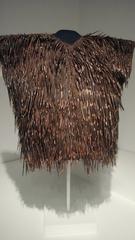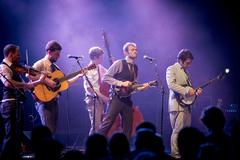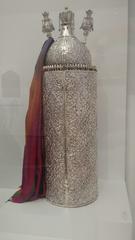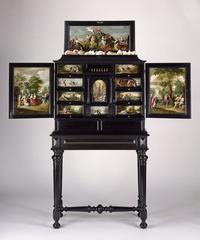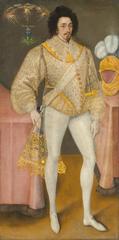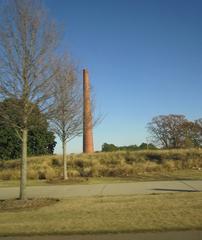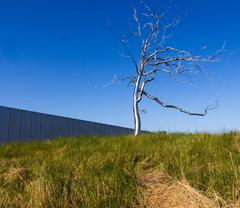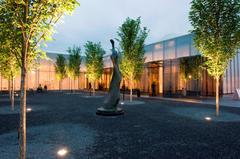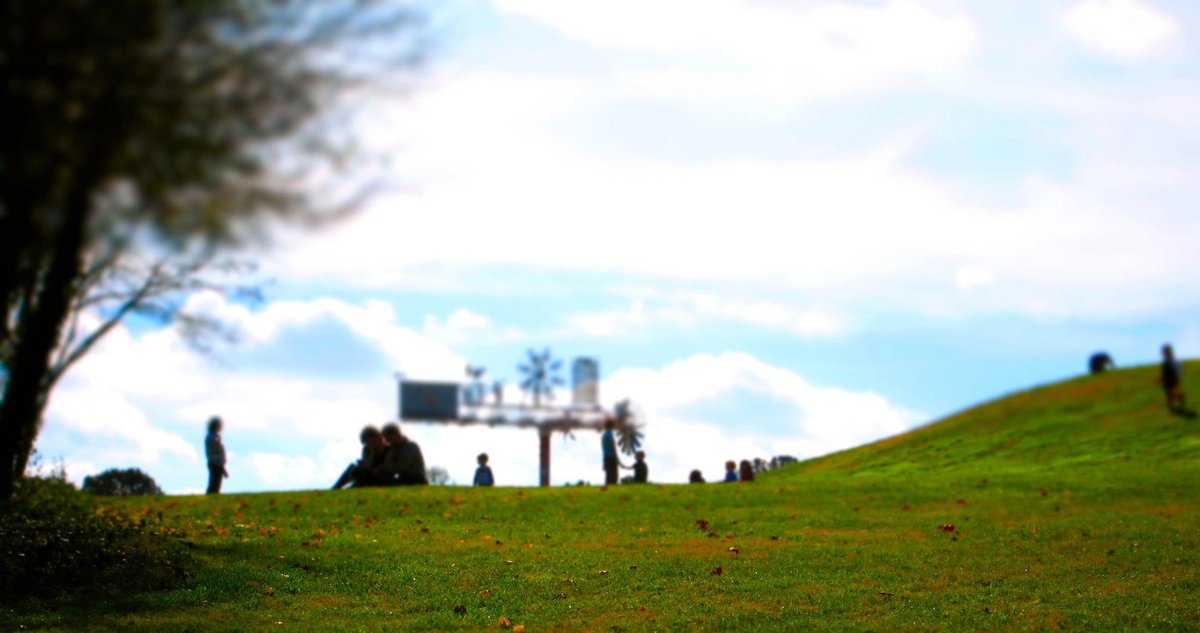
East Building Visiting Hours, Tickets, and Historical Sites in Raleigh
Publication Date: 17/07/2024
Introduction to East Building
The East Building of the North Carolina Museum of Art (NCMA) in Raleigh stands as a testament to both modernist architecture and the cultural vitality of the region. Designed by acclaimed architect Thomas Phifer, this remarkable structure, which opened in 2010, is celebrated for its innovative use of natural light and its seamless integration with the surrounding landscape. The East Building is not merely a place to view art; it is an experience that engages visitors through its design, collections, and educational programs. This comprehensive guide aims to provide all the essential details for planning your visit, including the building’s history, architectural significance, visitor information, travel tips, and more. Whether you are a local resident or a tourist, this guide will help you make the most of your visit to one of Raleigh’s most iconic cultural landmarks (NCMA History, Architectural Digest).
Table of Contents
- Introduction to East Building
- History of the East Building
- Architectural Significance
- Visitor Information
- Travel Tips
- Expansion and Renovations
- Special Events, Guided Tours, and Photographic Spots
- Cultural Impact and Community Engagement
- Notable Exhibitions and Collections
- Conclusion
- Sources
History of the East Building
Early Beginnings and Construction
The East Building, part of the NCMA, has a history that dates back to the mid-20th century. The NCMA was established in 1947, making it one of the first major museums in the United States to be funded by state legislation. The East Building, however, was a later addition, conceived to accommodate the growing collection and to provide a modern space for contemporary art.
Designed by the renowned architect Thomas Phifer, the East Building opened to the public in April 2010. Phifer’s design was selected for its innovative use of natural light and its ability to harmonize with the surrounding landscape. The building’s construction was part of a larger $72.3 million expansion project aimed at enhancing the museum’s facilities and visitor experience (NCMA History).
Architectural Significance
The East Building is celebrated for its architectural brilliance. Thomas Phifer’s design emphasizes transparency and light, featuring interconnected pavilions with glass walls that allow natural light to flood the interior spaces. This design enhances the viewing experience and creates a seamless connection between the indoor galleries and the outdoor sculpture park.
The building’s roof is another notable feature, consisting of skylights that filter natural light into the galleries below. This innovative use of light has been praised for its ability to illuminate artworks in a way that mimics natural outdoor conditions, providing an optimal viewing experience (Architectural Digest).
Visitor Information
Ticket Prices and Visiting Hours
- General Admission: Free (Donations appreciated)
- Special Exhibitions: Prices vary; check the NCMA website for current rates
- Visiting Hours:
- Monday: Closed
- Tuesday–Thursday: 10 AM–5 PM
- Friday: 10 AM–9 PM
- Saturday–Sunday: 10 AM–5 PM
For the latest information on ticket prices and visiting hours, visit the NCMA website.
Accessibility
The East Building is fully accessible, with ramps, elevators, and accessible restrooms available. Wheelchairs and strollers can be borrowed at the front desk.
Travel Tips
Getting There
The NCMA is located at 2110 Blue Ridge Road, Raleigh, NC. Parking is free and available on-site.
Public Transport
The museum is accessible via Raleigh’s public transport system. Check local schedules for bus routes and timings.
Nearby Attractions
Consider visiting the nearby Pullen Park, North Carolina Museum of Natural Sciences, and Raleigh Rose Garden to make the most of your trip.
Expansion and Renovations
Since its opening, the East Building has undergone several expansions and renovations to accommodate the museum’s growing collection and to enhance visitor amenities. One of the most significant expansions occurred in 2016, when the museum added new gallery spaces, a conservation lab, and a state-of-the-art auditorium. These additions were part of a $13 million project funded by both public and private sources (NCMA Expansion).
The renovations also included updates to the building’s infrastructure to improve energy efficiency and sustainability. The East Building now features advanced climate control systems and energy-efficient lighting, making it one of the most environmentally friendly museum buildings in the country.
Special Events, Guided Tours, and Photographic Spots
The East Building regularly hosts special events, including art classes, lectures, and workshops. Guided tours are available for those who want a deeper understanding of the exhibits. Don’t forget to bring your camera; the building’s architecture and the outdoor sculpture park provide excellent photographic opportunities.
Cultural Impact and Community Engagement
The East Building has played a crucial role in the cultural life of Raleigh and the broader North Carolina community. Since its opening, the building has hosted numerous high-profile exhibitions, featuring works by renowned artists such as Anselm Kiefer, Ellsworth Kelly, and Yayoi Kusama. These exhibitions have attracted visitors from across the country and have significantly boosted the museum’s profile on the national stage (Exhibition History).
In addition to its role as an exhibition space, the East Building has also become a hub for community engagement and education. The museum offers a wide range of programs and events, including art classes, lectures, and workshops, aimed at fostering a deeper appreciation for the arts among people of all ages. The building’s flexible spaces and state-of-the-art facilities make it an ideal venue for these activities, further cementing its status as a cultural landmark in Raleigh.
Notable Exhibitions and Collections
The East Building is home to an impressive collection of contemporary art, featuring works by both established and emerging artists. Some of the most notable pieces in the collection include works by artists such as Kehinde Wiley, whose vibrant portraits challenge traditional representations of African American subjects, and Mickalene Thomas, known for her bold, mixed-media portraits that explore themes of identity and beauty (NCMA Collection).
The building has also hosted several groundbreaking exhibitions that have garnered national and international acclaim. One such exhibition was You Are Here: Light, Color, and Sound Experiences, which featured immersive installations by contemporary artists and attracted record-breaking attendance.
Conclusion
The East Building of the North Carolina Museum of Art is more than just a repository of contemporary art; it is a cultural hub that enriches the community through its diverse exhibitions, educational programs, and commitment to accessibility and sustainability. From its architectural brilliance designed by Thomas Phifer to its role in hosting high-profile exhibitions featuring artists like Kehinde Wiley and Yayoi Kusama, the East Building has firmly established itself as a landmark in Raleigh. With free admission to its permanent collection, a variety of family-friendly activities, and state-of-the-art facilities, the East Building offers a unique and enriching experience for visitors of all ages. As the museum continues to expand and innovate, it remains a vital part of Raleigh’s cultural landscape, inviting everyone to explore, learn, and be inspired by the world of art (NCMA Collection, NCMA Expansion).
Sources
- NCMA History. North Carolina Museum of Art. Retrieved from https://ncartmuseum.org/about/history/
- Architectural Digest. (Year). North Carolina Museum of Art Thomas Phifer Article. Retrieved from https://www.architecturaldigest.com/story/north-carolina-museum-of-art-thomas-phifer-article
- NCMA Collection. North Carolina Museum of Art. Retrieved from https://ncartmuseum.org/art/collection/
- NCMA Expansion. North Carolina Museum of Art. Retrieved from https://ncartmuseum.org/about/expansion/
